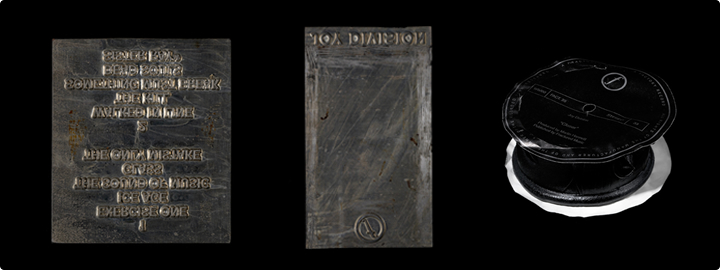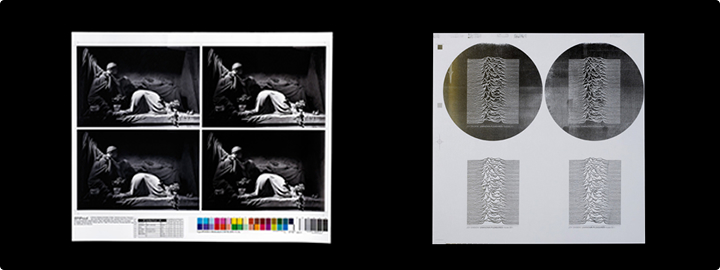| |
 |
| |
| アンドリュー・バーニー(以下AB) |
ANDREW BUNNEY (AB) |
|
| AB: |
このプロジェクトがこんなに骨の折れる仕事になった理由はなんだと思う? |
AB: |
Why was this project so demanding? |
|
| |
| ダニエル・メイソン(以下DM) |
DANIEL MASON (DM) |
|
| DM: |
それぞれのレコード・カヴァーは、そもそも、当時の製造工程においては、全く普通に出来上がったものだったんだ。今回は、それを正しく再現することが最も重要だった。だから僕がまずやるべきことは、オリジナルのデザイナー、使用されたアート・ワークを確認して、当時はどのようにカヴァーが制作されたのかを知ることだった。それは、何10年も前の印刷方法を調査するという、情熱的な旅だったよ。もともとはどんな素材が使用されていたのかを解明し、それを現代の印刷システムの中で再現しようとしたんだ。 |
DM: |
Each cover appears to be quite ordinary in its production but demands attention if it is to be correct. What transpired was an intense journey exploring print methods from decades ago along with sourcing original suppliers and determining what would have originally been used and finding it in today’s printing fraternity. |
|
| |
| AB: |
つまり、当時の印刷工程が、現在は消滅してしまったということ? |
AB: |
Why has the process become extinct? |
|
| |
| DM: |
印刷そのものの工程は消滅してはいない。ただ技術は日々進化している。今日では、印刷用のイメージ素材がすべてデジタル・データになっている。印刷時の失敗や、偶然性を最小限に押さえるためにね。 |
DM: |
The processes have not become extinct. It's that technology has moved on, becoming evermore digital and trying to minimise mistake and the randomness of print. |
|
| |
| AB: |
すごく大がかりな調査をしたってこと? |
AB: |
What lengths did you have to go to? |
|
| |
| DM: |
僕の作業は、近年の印刷の歴史について巨大な考古学的調査をするようなものだった。今までは、誰にも着手されることがなかった類のものだね。僕はファクトリー・レコードの元従業員や、オリジナル・プリンターだったギャロッド&ロフトハウスとも話した。エンボス加工のテストは何回も行ったし、30年前の印刷方法に僕自身が何度もトライし、それを十分に理解する必要があった。オリジナル盤の印刷素材がどんなものか、知ることも必要だったしね。 |
DM: |
It presented a mammoth archaeological project of recent print history, which had never before been undertaken. Talking to former employees of Factory Records and the original printers, Garrod & Lofthouse. There were many embossing tests and I had to try and understand what it was like to print 30 years ago, and what the materials were like then. |
|
| |
 |
| |
| AB: |
一番難しかった点は? |
AB: |
Which was the most difficult part? |
|
| |
| DM: |
ひとつの要素だけを挙げることはできないな。『クローサー』のカヴァー・イメージの基になったバーナード=ピエール・ウルフの写真なんかも、典型的な<難しい例>だね。また、オリジナル盤はそれぞれのスリーヴを製作する際の素材、工程、印刷方法について、非常に繊細で、効果的なものが起用されていた。『アンノウン・プレジャーズ』のアート・ワークは、エンボス加工によりエッチング調に表現されていた。『クローサー』のスリーヴに使われていたのは、クロス貼りの書籍に使われている布だったし、『スティル』のスリーヴにおける灰色地の素材への箔押しも……すべてが触覚的なんだ。 |
DM: |
There is not one specific element that you could put your finger on. Sourcing of the image owner of the cover of Closer, Bernard Pierre-Wolff, proved difficult. Each sleeve employs materials, process and print in subtle but effective ways. From the embossed board of Unknown Pleasures to the etching effect of the image and the stock of Closer through to the book cloth, grey board and foil blocking of Still. They are all very tactile. |
|
